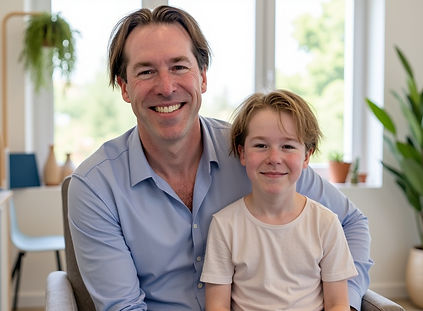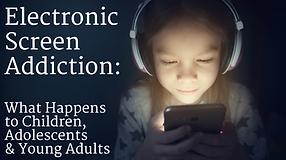
Assisting Neurodiverse Children Since 1994

Paul Newcombe, Action Kids Therapy, 2024
Is Your Child Overwhelmed, Irritable, or Withdrawn?
Their spark isn't gone!
Their brain is simply overstimulated — and we can restore balance.
Welcome to

How To Permanently Recover Young People
From Electronic Screen Obsession or Addiction
The Online Workshop for Health Professionals & Parents
The Bombarded Workshop employs the SIND* TREATMENT PROTOCOL which gently resets the screen-affected nervous system and restores emotional balance, motivation, and connection — without yelling, bribing, or constant battles.
(* SIND = Screen Induced Neurological Dysregulation).

Created by Paul Newcombe
-
Pediatric Occupational Therapist & Screen Addiction Specialist.
-
30 years of clinical experience.
-
Founder of Action Kids Therapy.
-
Creator of the SIND Recovery Model.
You're not imagining it...
Something has shifted
Over the past few years, many parents and professionals have watched children change in ways that feel sudden, confusing, and painful. Kids who were once joyful, curious, and connected are now more irritable, anxious, withdrawn, overwhelmed, or shut down. And often, no one can quite explain why.
The truth is, their brains are being asked to handle more stimulation than they are biologically designed for. Modern digital environments — especially gaming, short-form video, and fast-scrolling apps — flood the nervous system with high-intensity input that the developing brain struggles to regulate.
This overwhelms the systems responsible for:
-
Dopamine (motivation & reward)
-
Cortisol (stress response)
-
Serotonin (mood & emotional stability)
-
Melatonin (sleep rhythms)
This isn’t a “discipline problem” or “just a phase.” It’s a neurochemical overload — dopamine spikes, cortisol stress cycling, serotonin depletion, melatonin disruption — all driving irritability, meltdowns, disconnection, anxiety, defiance, and even depression.
~ Paul Newcombe
Common signs...
of Screen-Induced Neurological Dysregulation (SIND)
-
Emotional reactivity, meltdowns, or quick frustration
-
Moodiness, anxiety, or shutdown
-
Difficulty calming down or falling asleep
-
Loss of interest in non-screen activities
-
Avoidance of schoolwork or responsibilities
-
Social withdrawal or isolation
-
Refusal to participate in family life
-
Hours disappearing into games or scrolling
“Yes, I know — screens are the new vegetables. Everybody thinks kids need five servings a day.
Some toddlers have data plans more detailed than my mortgage!
But every week, I meet kids who seem perfectly ‘fine’… until you turn off the Wi-Fi. Then suddenly the room goes from peaceful to prehistoric! And it’s not just here — this is everywhere. The graphs aren’t just on the rise — they’re trying to escape the spreadsheet and call for help!”
~ Paul Newcombe
This is not your fault
Your child is not broken or lazy.
Their nervous system is overwhelmed.
Any human (at any age)
would struggle under this level of stimulation
We do not shame
We restore balance
Your child is not “busted.” Their brain has been hijacked by pixels with PhD-level psychology behind them.
~ Paul Newcombe
If you work with children
who present as dysregulated, anxious, oppositional, depressed, avoidant, or disconnected — screen-induced neurochemical overload may be a contributing factor or the primary driver.
The good news is...
the brain is not stuck this way
When we support the nervous system and reduce overstimulation, children come back to themselves — often more quickly than you expect.
Developed by a clinician
who has treated this since 2016
I’m Paul Newcombe, a Pediatric Occupational Therapist with 30 years of clinical experience supporting children, teens, and young adults with nervous system dysregulation, sensory processing challenges, emotional overwhelm, anxiety, and (since 2016) screen-based behavioral withdrawal.
My work focuses on how the nervous system responds to prolonged digital stimulation, and how to restore emotional regulation, motivation, and connection through targeted nervous system recovery — not discipline, willpower strategies, or behavioral reward charts.

Paul Newcombe, Action Kids Therapy, 2024
Since 2016, I’ve worked alongside families, schools, mental health teams, medical professionals, and therapy providers to help thousands of young people rebuild stability, confidence, and identity after screen-driven overload.
I created this program because parents and professionals everywhere were seeing the same symptoms, but no one was offering a clear, step-by-step treatment method grounded in brain and nervous system science. The SIND Treatment Protocol is the result of detailed research and years of clinical practice, real case outcomes, and careful refinement — in homes, clinics, and educational settings.
"I want you to know this : Your child can recover. Not through pressure or force — but through restoring balance where it matters most"
~ Paul Newcombe
Why is the

Online Workshop
So popular?
-
It doesn’t blame parents
-
It doesn’t shame the child
-
It treats the brain, not the behavior
-
It follows a clear, step-by-step system
-
It works even if a child is resistant
Workshop Curriculum

MODULE 1 (35 minutes)
In Module 1, participants learn how and why children’s screen use has rapidly increased, becoming a primary space for play, learning, and social connection. They see how this shift has reduced real-world sensory and social experiences. The emphasis is on understanding the global scope of the change and how quickly it occured.

MODULE 2 (43 minutes)
In Module 2, participants learn how the dramatic rise in daily screen exposure corresponds with a significant increase in childhood neuropsychological challenges—including anxiety, irritability, attention difficulties, mood instability, social withdrawal, and sensory overwhelm. They explore how these changes have appeared across schools, homes, and clinical settings, and why traditional approaches often fall short when screen-related stress on the nervous system is not addressed.

MODULE 3 (PART 1) (47 minutes)
In Module 3, participants learn how electronic screens directly influence the developing nervous system, altering key brain chemicals that regulate attention, motivation, sleep, emotional balance, and stress. They gain a clear understanding of how overstimulation, rapid visual input, and reward-driven design activate dopamine and cortisol, while suppressing the calming and restorative systems the brain relies on.

MODULE 4 (PART 2) (61 minutes)
In Module 4, participants learn how prolonged screen exposure continues to impact the body and brain over time, leading to changes in emotional regulation, social development, sleep patterns, and overall resilience. They see exactly how melatonin and serotonin are suppressed leading to poor sleep hygiene and sadness or depression. Weakened frustration tolerance, reduced motivation for real-world activities, irritability, or withdrawal can, in some cases, produce comorbid behaviors including self-harm.

MODULE 5 (67 minutes)
In Module 5, participants learn what screen-related brain and body changes look like in real life across childhood, adolescence, and young adulthood. They’ll see how increasing screen dependence can lead to poor sleep, reduced motivation, emotional volatility, social withdrawal, difficulty coping with everyday stress, sadness, depression and comorbid behaviors including self-harm.

MODULE 6 (92 minutes)
In Module 6, participants learn a clear, step-by-step process for identifying when screen use has begun to disrupt a child or young person’s functioning — behaviorally, emotionally, socially, and neurologically. They are shown how to assess patterns of dependence, withdrawal, and sensory overload, and then how to apply practical, structured treatment strategies that reset brain chemistry, restore calm, rebuild real-world interests, and gradually reintroduce healthy screen habits. The focus is on providing a reliable, repeatable method that leads to measurable change.

MODULE 7 (31 minutes)
In Module 7, participants review the key concepts from the course and see how they fit together into a clear, practical framework for understanding and responding to screen-related challenges. The emphasis is on confidence—knowing what to look for, how to explain it to others, and how to apply the treatment approach effectively. The module leaves participants with a strong sense of direction and readiness to support lasting, meaningful change in children and young people.
This is not guesswork, trial-and-error, or "hope for the best."
This is a structured nervous system restoration process used
successfully with families since 2016.
We reset the brain first — then rebuild healthy motivation and interests — together as a family system.
~ Paul Newcombe
Workshop Participants Receive:
-
An automated CERTIFICATE OF COMPLETION (6.25 PD Hours)
-
The 5 Best Tools for assessing kids for electronic screen syndrome.
-
A Step-By-Step Treatment Manual for:
-
resetting screen-affected brain chemistry,
-
developing non-screen interests in the right areas,
-
employing a customized weekly screen routine.
-
and much more...
-
-
A complete set of "Workshop Notes" covering every point made (and cross-referenced to relevant research).
-
A Research Library of over 260 research papers (with hyperlinks to the papers).
Start Rescuing Kids From Screen Obsession, Today!
ENROLL NOW
Copyright, Action Kids Therapy, 2023. All rights reserved.
Action Kids Therapy
Level 1, 8 Nilmar Avenue,
Wodonga Victoria, Australia 3690.
Frequently asked questions
- 01
- 02
- 03
- 04
- 05

